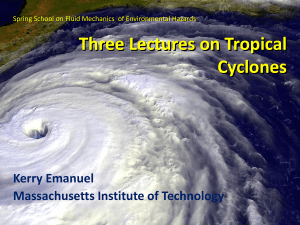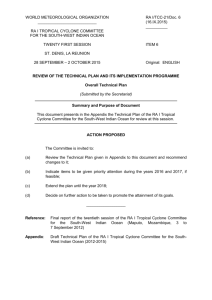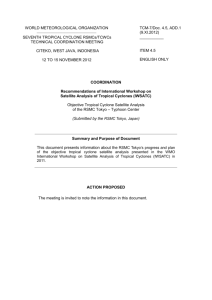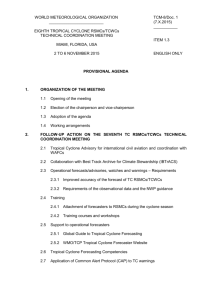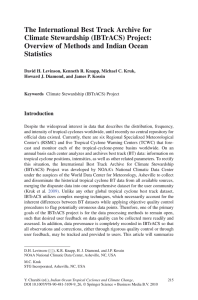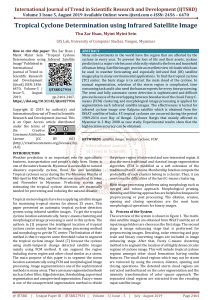Ajit Tyagi, Suman Goyal and M Mohapatra
advertisement
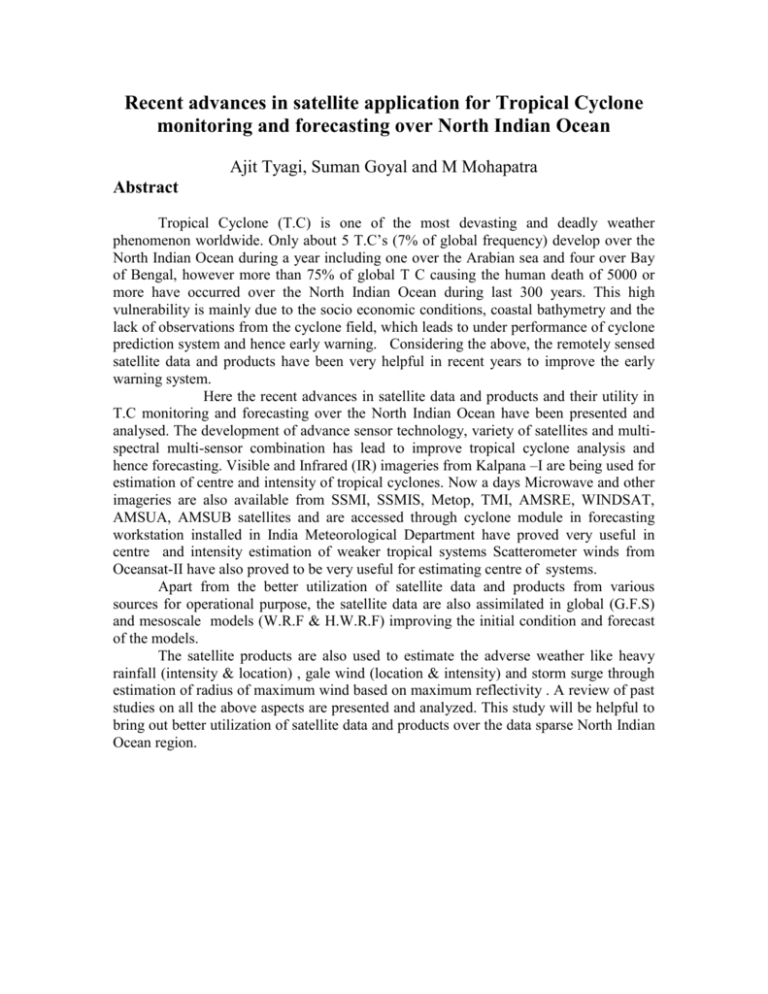
Recent advances in satellite application for Tropical Cyclone monitoring and forecasting over North Indian Ocean Ajit Tyagi, Suman Goyal and M Mohapatra Abstract Tropical Cyclone (T.C) is one of the most devasting and deadly weather phenomenon worldwide. Only about 5 T.C’s (7% of global frequency) develop over the North Indian Ocean during a year including one over the Arabian sea and four over Bay of Bengal, however more than 75% of global T C causing the human death of 5000 or more have occurred over the North Indian Ocean during last 300 years. This high vulnerability is mainly due to the socio economic conditions, coastal bathymetry and the lack of observations from the cyclone field, which leads to under performance of cyclone prediction system and hence early warning. Considering the above, the remotely sensed satellite data and products have been very helpful in recent years to improve the early warning system. Here the recent advances in satellite data and products and their utility in T.C monitoring and forecasting over the North Indian Ocean have been presented and analysed. The development of advance sensor technology, variety of satellites and multispectral multi-sensor combination has lead to improve tropical cyclone analysis and hence forecasting. Visible and Infrared (IR) imageries from Kalpana –I are being used for estimation of centre and intensity of tropical cyclones. Now a days Microwave and other imageries are also available from SSMI, SSMIS, Metop, TMI, AMSRE, WINDSAT, AMSUA, AMSUB satellites and are accessed through cyclone module in forecasting workstation installed in India Meteorological Department have proved very useful in centre and intensity estimation of weaker tropical systems Scatterometer winds from Oceansat-II have also proved to be very useful for estimating centre of systems. Apart from the better utilization of satellite data and products from various sources for operational purpose, the satellite data are also assimilated in global (G.F.S) and mesoscale models (W.R.F & H.W.R.F) improving the initial condition and forecast of the models. The satellite products are also used to estimate the adverse weather like heavy rainfall (intensity & location) , gale wind (location & intensity) and storm surge through estimation of radius of maximum wind based on maximum reflectivity . A review of past studies on all the above aspects are presented and analyzed. This study will be helpful to bring out better utilization of satellite data and products over the data sparse North Indian Ocean region.


